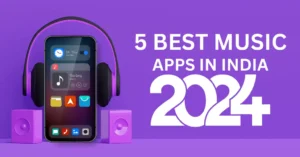In the contemporary, fast-paced digital landscape, social media has emerged as an invaluable participant in international sports advertising and marketing. It has yet to convert how sports activities are fed on most effectively; however, it also spreads out a world of opportunities for teams, athletes, and types to engage with their target market in revolutionary ways. This article dives into the importance of Social Media in Sports Marketing, how athlete impact is leveraged, the role of live streaming and content material introduction, the power of data analytics for centered campaigns, challenges and risks, and future traits shaping this dynamic area.
The Importance of Social Media in Sports Marketing
Social media is the MVP (Most Valuable Player) in sports advertising. It provides an exceptional platform for teams, athletes, and brands to hook up with enthusiasts, build logo loyalty, and drive sales. Whether it’s sharing thrilling game highlights, in-the-back-of-the-scenes glimpses, or interactive fan stories, social media is where the game comes alive. It creates an instantaneous line of communication among sports activity entities and their target audience, fostering a sense of network and engagement that became inconceivable in the pre-virtual era.
The effect of social media on sports advertising is far-reaching. It allows sports activity businesses to create a worldwide fanbase, breaking down geographical boundaries. Fans from around the sector can immediately connect to their favored groups, gamers, and fellow supporters. This level of accessibility and connectivity turned into a dream for sports activity marketers.
Leveraging Athlete Influence
Athletes have emerged as more than gamers; they may now be influencers. Their social media presence has given them a unique platform to connect with fanatics, share their adventures, and advocate products and types. Brands recognize the power of athlete endorsements and collaborations, leveraging their authenticity to attain a very engaged and centered target audience. Athletes no longer most effectively sell products but additionally inspire and motivate their fans, creating a personal connection that goes beyond the sport.
The influence of athletes extends to social problems and reasons they’re passionate about. They use their platforms to suggest, exchange, and raise consciousness about important societal subjects. This socially conscious technique resonates with enthusiasts and aligns with the values of many brands, in addition to strengthening the bond between sports activities, athletes, and social media.
Live Streaming and Content Creation
Live streaming has changed the sport of sports marketing. Whether broadcasting a live sport, hosting a Q&A consultation, or imparting a unique check of a participant’s existence, stay streaming offers real-time engagement that captivates enthusiasts. Content introduction, on the other hand, allows sports entities to inform compelling stories. From viral videos to fascinating infographics, innovative content keeps fans hooked and returning for more. Social media structures provide the canvas on which those memories are painted, allowing teams and athletes to percentage their particular narratives.
The immersive nature of live streaming makes fans feel like they may be part of the action. This feeling of participation enhances their connection with the team or athlete, making them much more likely to invest in merchandise, attend video games, or help with associated sponsorships. In addition, it opens up revenue streams via pay-according-to-view models, subscription-based total content material, and virtual product sales.
Data Analytics and Targeted Campaigns
Data analytics is the playbook for effective sports advertising. Social media systems offer a treasure trove of records, permitting teams and brands to recognize their audience’s options, behaviors, and demographics. Armed with this information, they can craft targeted campaigns that resonate with particular segments of their fan base. From personalized promotions to tailored content material, record-driven selections result in higher engagement and conversion rates.
The strength of data analytics isn’t always restrained to fan engagement; it extends to sponsorship and partnership possibilities. Brands can examine the effect of their collaborations with sports entities, ensuring that their investments yield the desired consequences. This data-driven approach strengthens the relationships between sports businesses and their sponsors, mainly through long-term partnerships.
Challenges and Risks
While social media offers giant opportunities, it also comes with challenges and dangers. The fast-paced nature of virtual communication methods means that mistakes can go viral in seconds, leading to PR crises. Maintaining brand consistency throughout a couple of social media channels may be a challenge, and coping with terrible feedback and backlash calls for ability and diplomacy. Additionally, privacy concerns and information safety are always on the horizon, demanding a vigilant method to guard fan records.
Addressing those demanding situations and mitigating risks require an aggregate of effective crisis management strategies and proactive measures. Properly-idea-out social media coverage and an educated team are important for navigating the potential pitfalls.
Future Trends
The destiny of social media in sports advertising and marketing is an ever-evolving sport. Here are a few tendencies to look at out for:
(VR) and (AR): VR and AR technologies are set to convert the fan to enjoy. From digital stadium tours to immersive in-sport stories, that technology will convey lovers toward the motion.
E-Sports Integration: The intersection of traditional sports and e-sports is developing. Expect more collaborations and crossover events among these worlds.
Interactive Content: The upward thrust of interactive content material, consisting of polls, quizzes, and live polls, will keep fanatics engaged and allow them to steer game choices.
Sustainability and Social Responsibility: Fans are increasingly conscious of environmental and social troubles. Sports entities that champion sustainability and social duty will advantage favor.
Niche Social Platforms: While giants like Facebook and Twitter remain vital, niche social platforms that cater to particular sports activities or fan communities will gain traction.
AI and Chatbots: AI and chatbots will play a greater function in fan engagement and customer support.
Conclusion
Social media has emerged as a sport-changer in sports activities advertising. It has redefined how sports are consumed and how fanatics interact with their favored teams and athletes. Leveraging athlete influence, embracing stay streaming, gaining knowledge of content material introduction, and utilizing information analytics are keys to success. However, navigating the demanding situations and staying ahead of future trends are equally essential in this ever-evolving field. In the digital game of sports advertising, social media is the megastar participant that may take your crew to victory. As the sphere continues to conform, embracing those adjustments and adapting to new traits could be essential for sports activities entrepreneurs to stay competitive and maintain to attain big within the digital sport.








